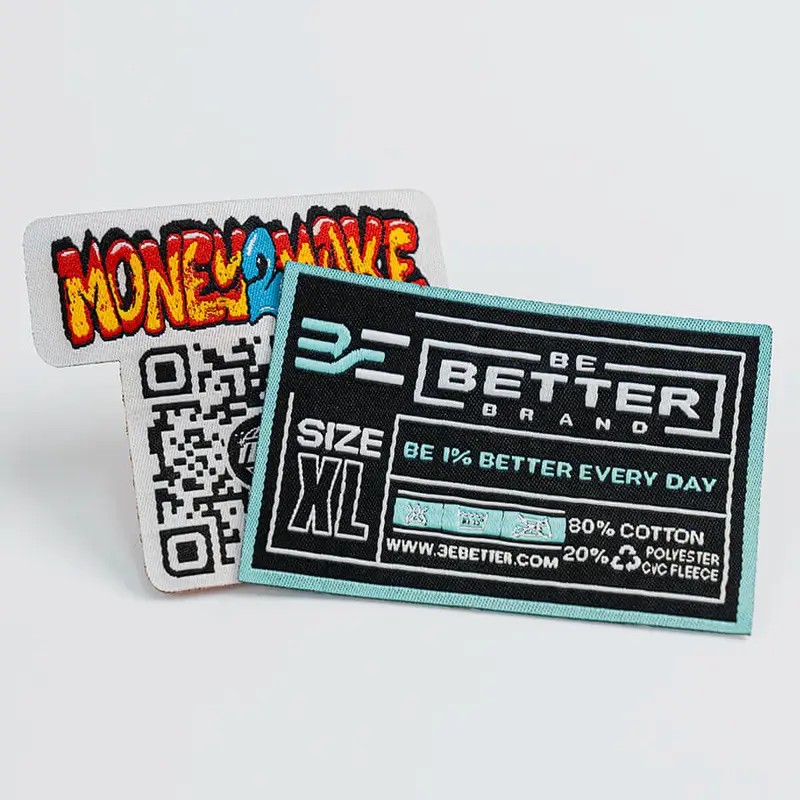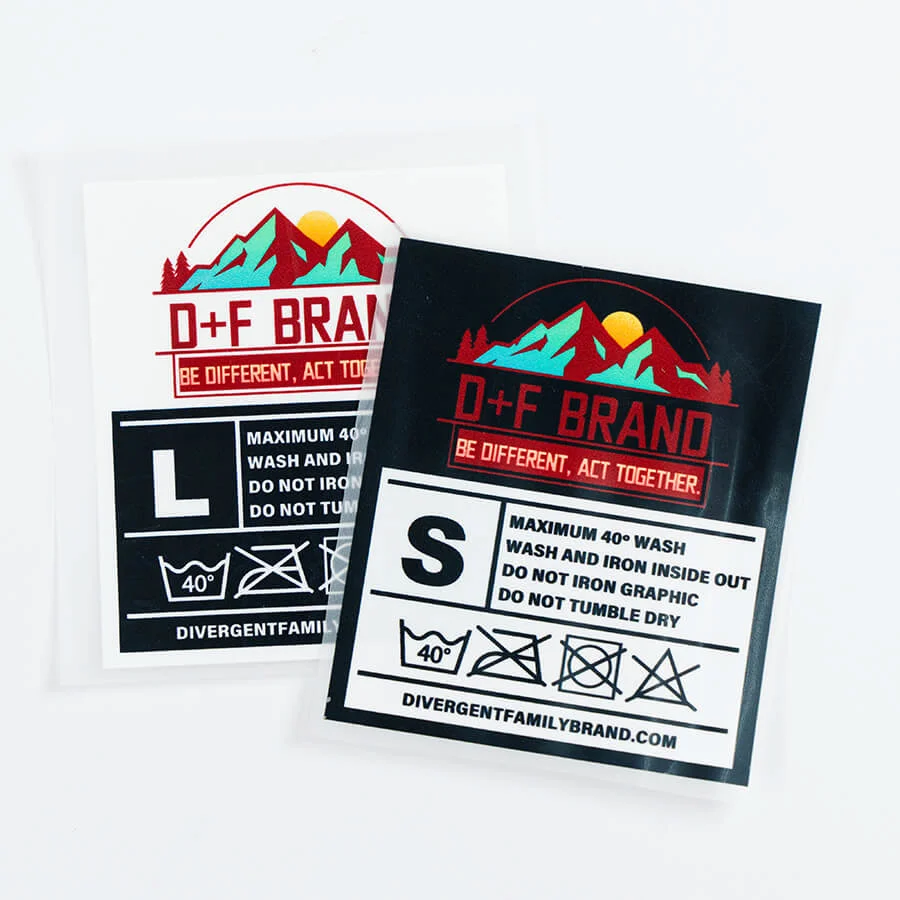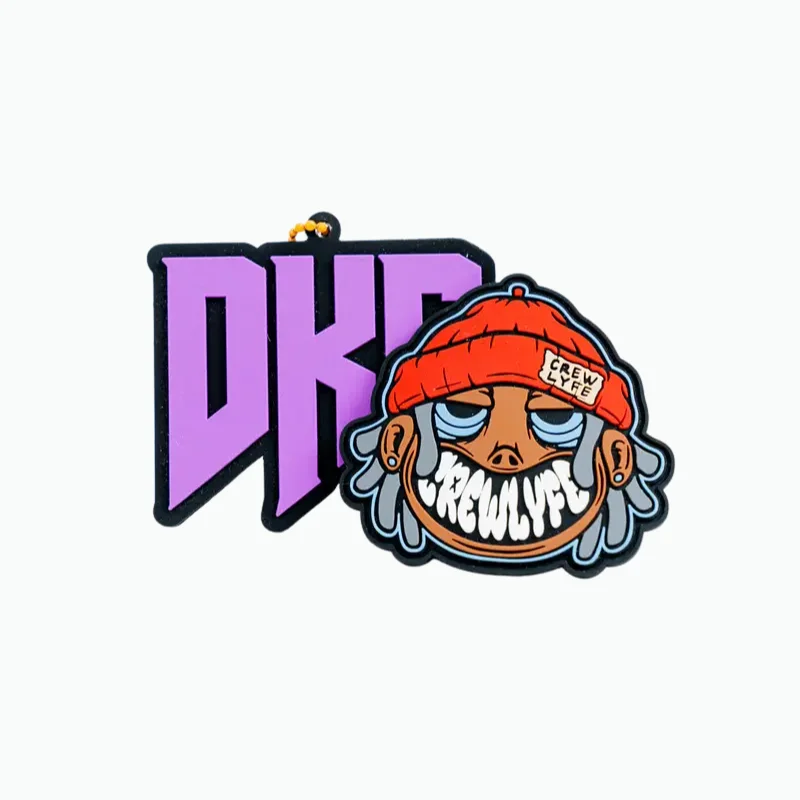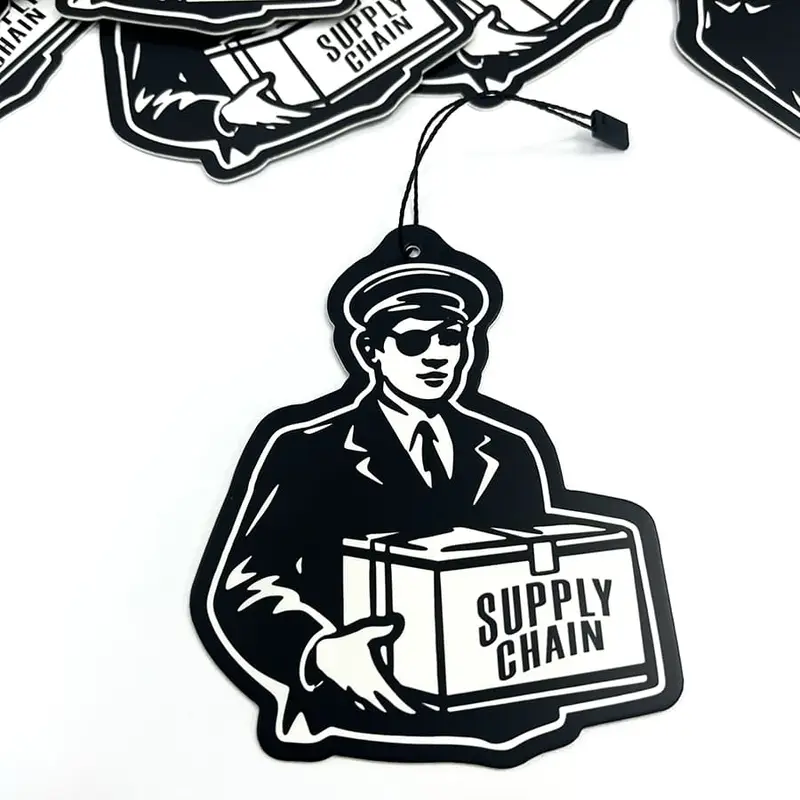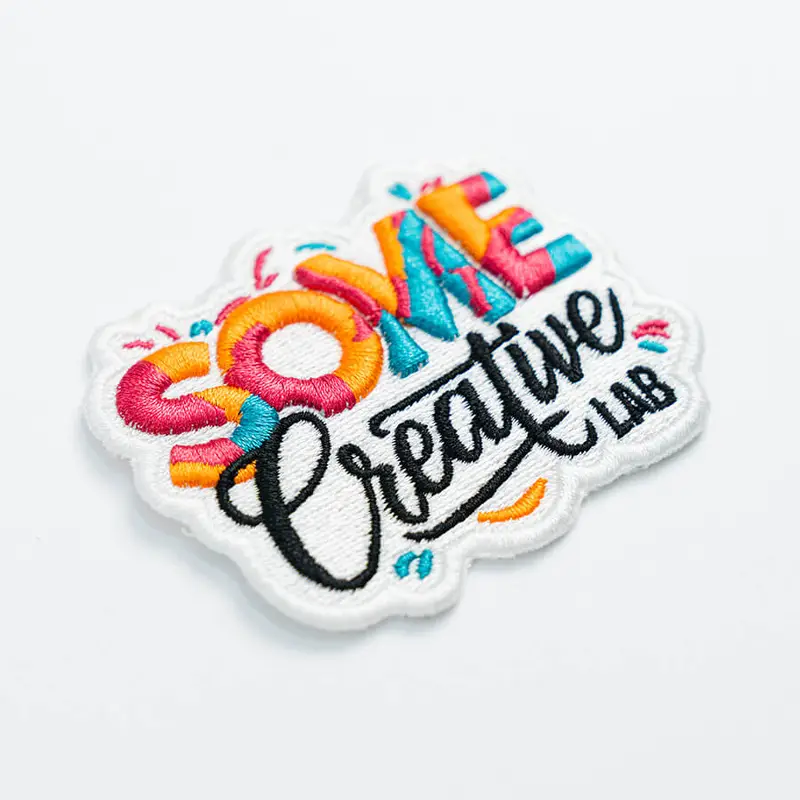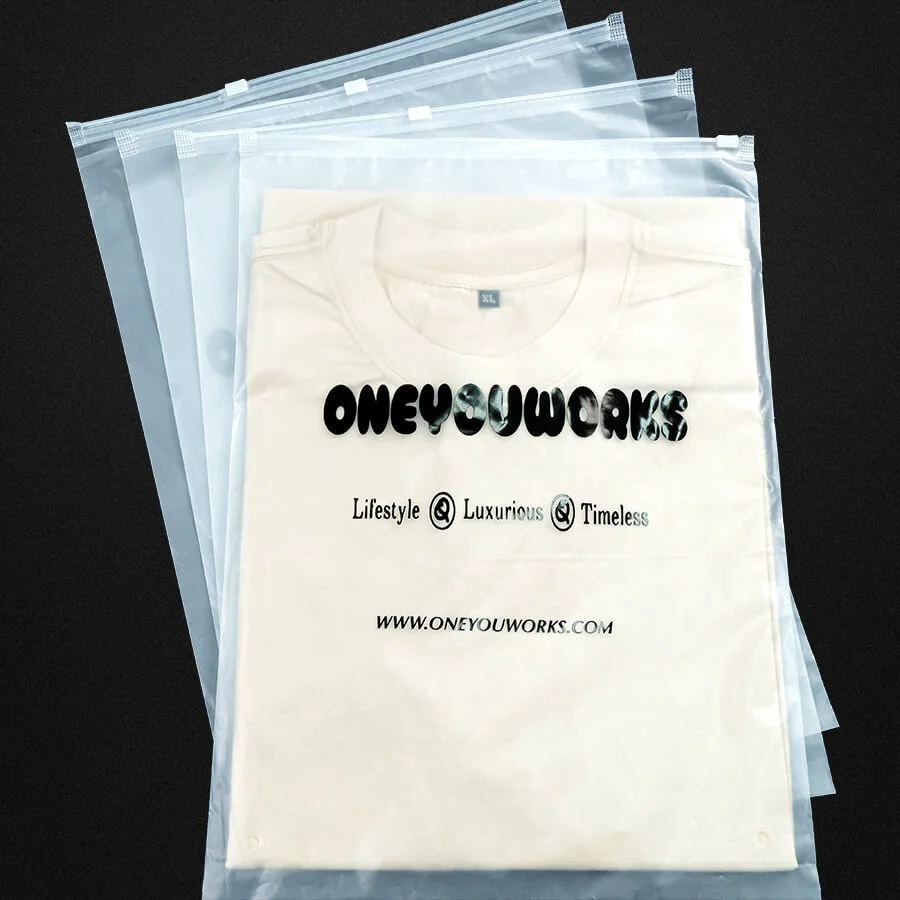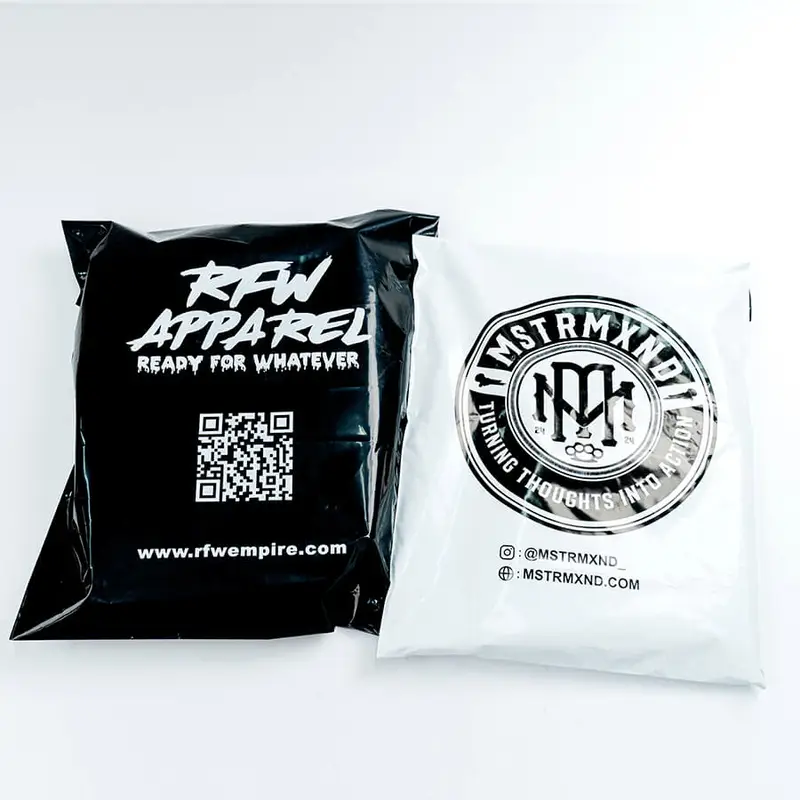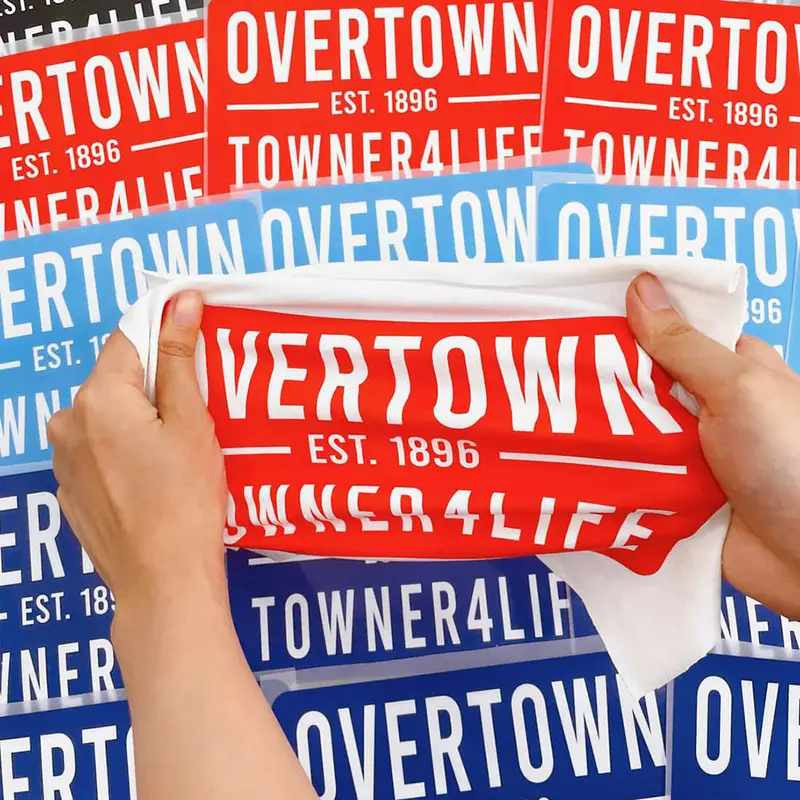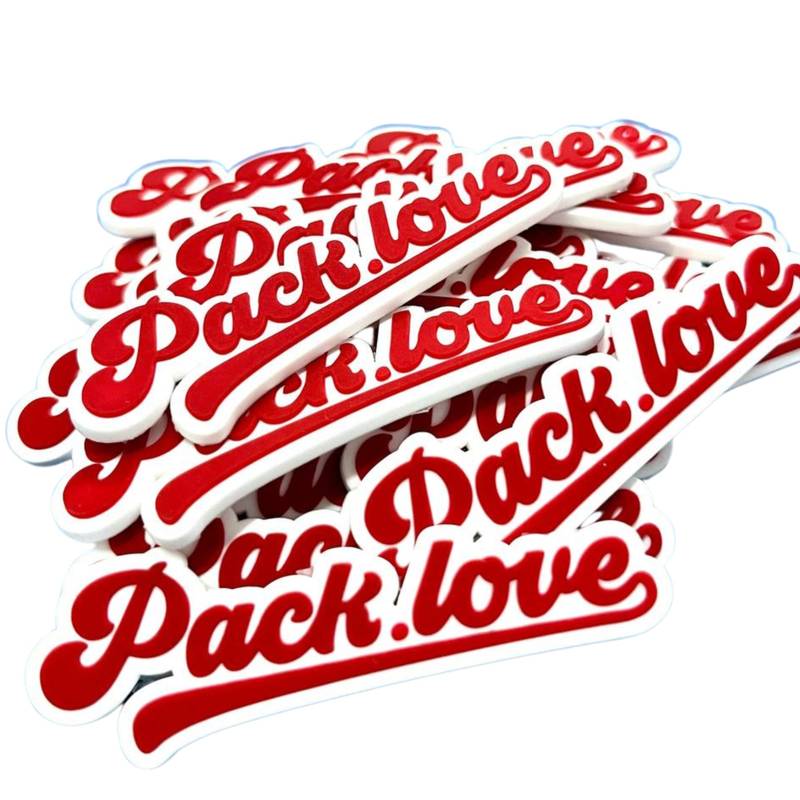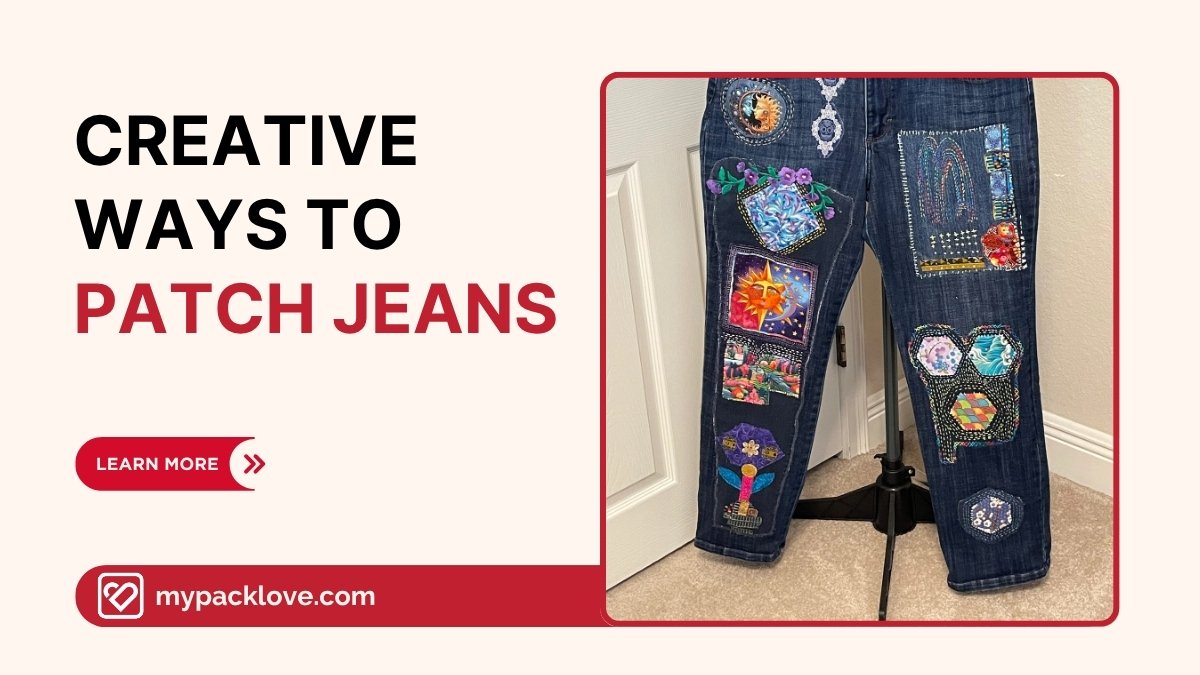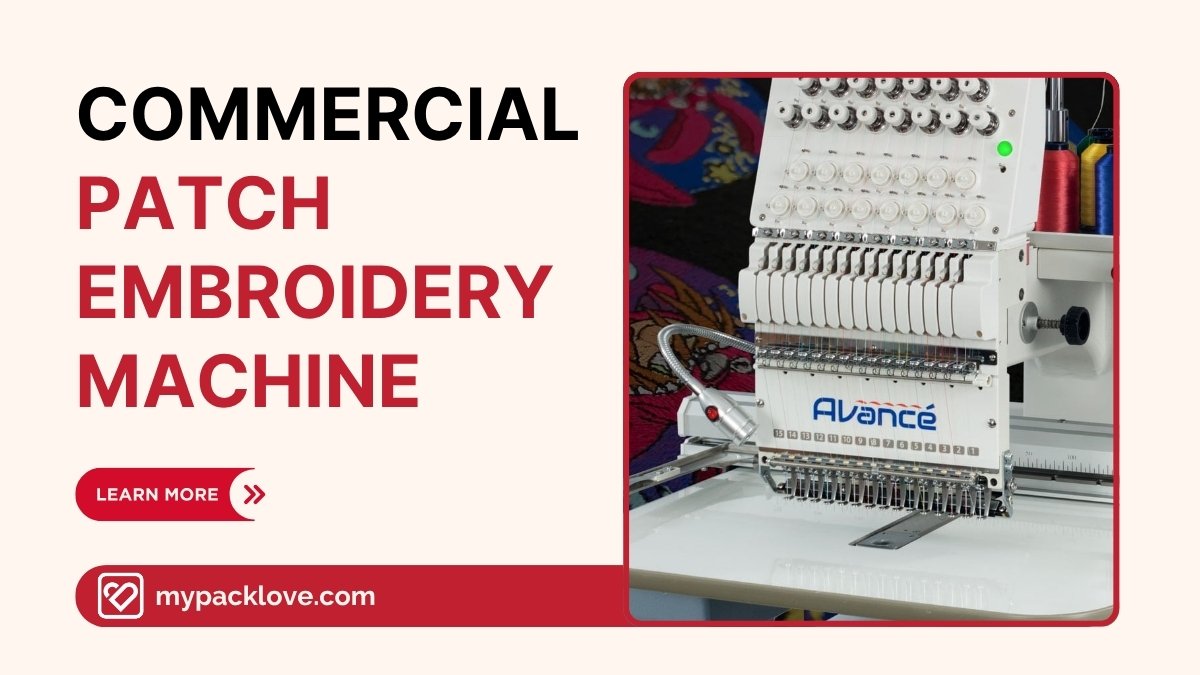Biker Vest Patch Placement: Rules, Etiquette and Ideas
Identifying iron-on patches is crucial for successful application and preventing damage to your items. Remember the key methods: visually inspecting the backing for a shiny, smooth, and often translucent appearance; performing a touch test to feel for a smooth, plastic-like texture; and conducting a water droplet test to observe whether the water beads or absorbs. Proper identification ensures you use the correct application method, avoiding potential mishaps and achieving a professional-looking result. For all your custom patch needs, including embroidered, woven, and printed options, explore the wide selection and expert services at MyPackLove.com. Don’t risk ruining your belongings—take the time to identify your patches correctly and personalize with confidence. Visit MyPackLove.com today to start creating!
1. Understanding biker vest patch etiquette
1.1 The significance of patch placement
Within biker culture, patch placement on a motorcycle club vest (MC vest) carries significant meaning and adheres to a complex system of etiquette. Proper placement communicates the wearer’s club affiliation, rank, and territorial claim, while incorrect placement can convey disrespect, misrepresentation, or even invite conflict.
For example, wearing a “1%er” patch without belonging to a recognized 1%er motorcycle club is considered highly disrespectful and can provoke negative reactions from other bikers. Similarly, wearing a club’s patch in a location or configuration that doesn’t align with their established rules can be misinterpreted as a challenge or a sign of disrespect.
It’s crucial to understand that patch placement rules and interpretations can vary significantly between different motorcycle clubs. The information presented here serves as a general overview and should not be considered universally applicable.
Always research and respect the specific rules and traditions of individual clubs to avoid misunderstandings or unintentional disrespect within the biker community. Patch placement within biker culture is more than just decoration; it’s a symbolic language with established codes and conventions that must be understood and respected.
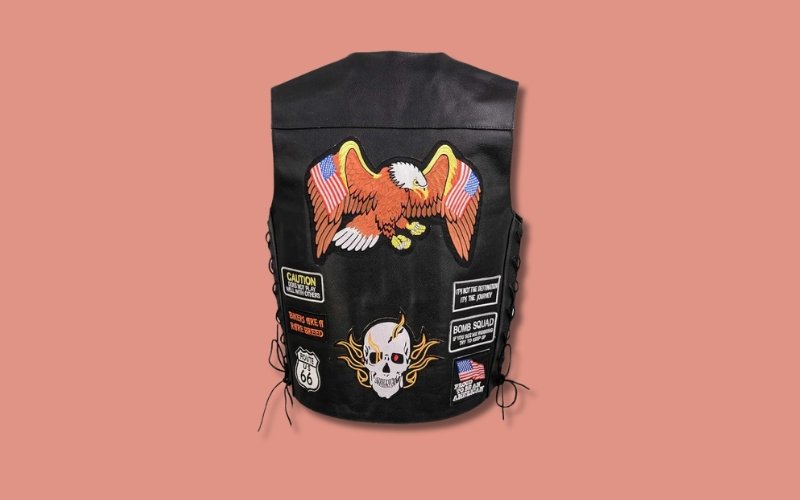
1.2 Respecting MC patches and colors
In outlaw motorcycle clubs, known as “1%er” MCs, patches hold significant meaning. These clubs originated the tradition of patch-wearing and are fiercely protective of their insignia. Club-specific patches are exclusively worn by members deemed worthy by club leadership, and displaying these patches without belonging to the club is highly disrespectful.
The large, embroidered center back patch, representing the club’s insignia, serves as a profound symbol of identity and membership. These “colors,” or three-piece patches, signify club membership and rank within the club. Crafted through embroidery or stenciling, these patches are considered club property, worn only by fully patched members. Respect for these patches is paramount within biker culture.
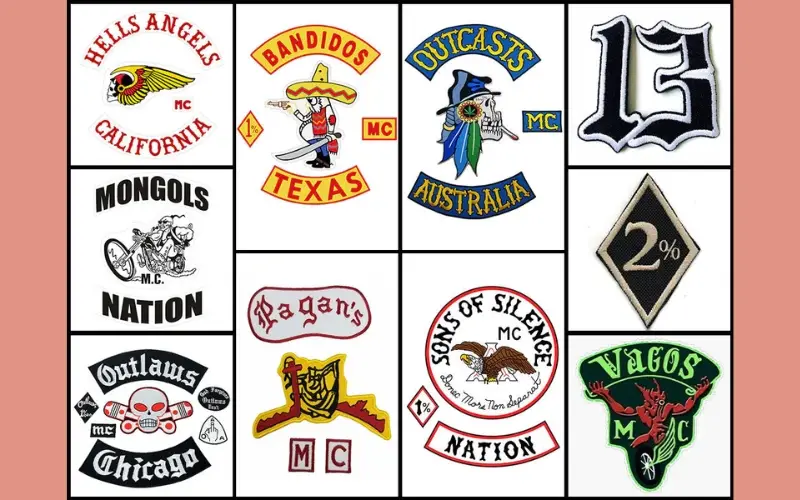
1.3 Commonly accepted placement areas
Motorcycle vest patches typically adhere to common placement conventions, creating a visual language understood within biker culture. The vest’s front, back, sides, and collar each serve as designated areas for displaying patches with specific meanings. (Include a visual diagram of a vest highlighting these areas: front left and right, back center, side panels – under the arms and along the ribs, and the collar).
These designated areas provide a framework for understanding patch placement hierarchy and symbolism, which will be explored in more detail in the following sections. Understanding these common locations is the first step in deciphering the intricate world of biker patch etiquette.
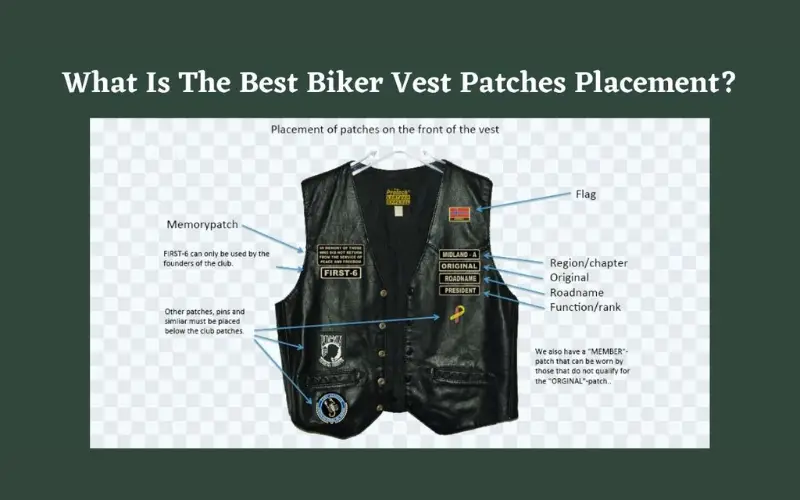
2. Biker vest patch placement guide
2.1 Front chest placement
The front chest of a biker vest is a prominent area for displaying key patches. The left chest typically features the club’s logo for immediate recognition. Name patches, often displaying a nickname, are positioned on the left side over the heart.
Any club office held by the wearer is indicated by a patch placed below the name patch. The right chest area is reserved for showcasing personal accomplishments, such as event wins, completed training, or earned certifications. This structured layout quickly conveys essential information about the wearer’s club affiliation, role, and individual achievements.
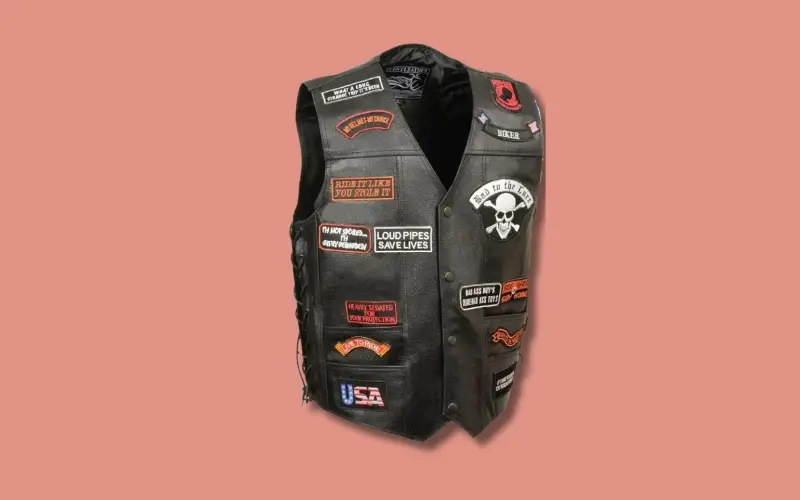
2.2 Back panel placement
The back center of the vest, being the largest area, offers ample space for patches, yet it’s primarily reserved for the club’s main patch, known as “colors.” This prominent patch signifies club membership and typically includes the club’s name, logo, and location.
While the area above the colors patch can be used to display personal interests and beliefs, the colors patch itself should only be worn by legitimate members of the club. Displaying a club’s colors without belonging to that organization is a serious breach of biker etiquette. This central location serves as a powerful declaration of club affiliation and identity.
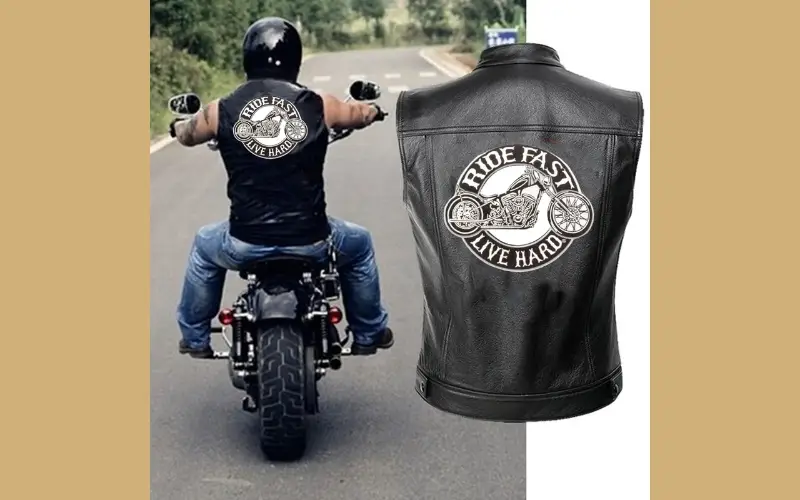
2.3 Side and arm placement
The side panels of a biker vest, including the areas along the arms and rib cage, provide ideal locations for displaying event or travel patches. These patches often serve as mementos of rallies or rides, documenting a biker’s participation and experiences.
Side panels also accommodate patches representing affiliations that don’t conflict with the wearer’s primary club, such as the American Motorcyclist Association, signifying a broader commitment to the motorcycle lifestyle. These less formal patches add a personal touch and showcase a rider’s individual interests and involvements within the biker community.
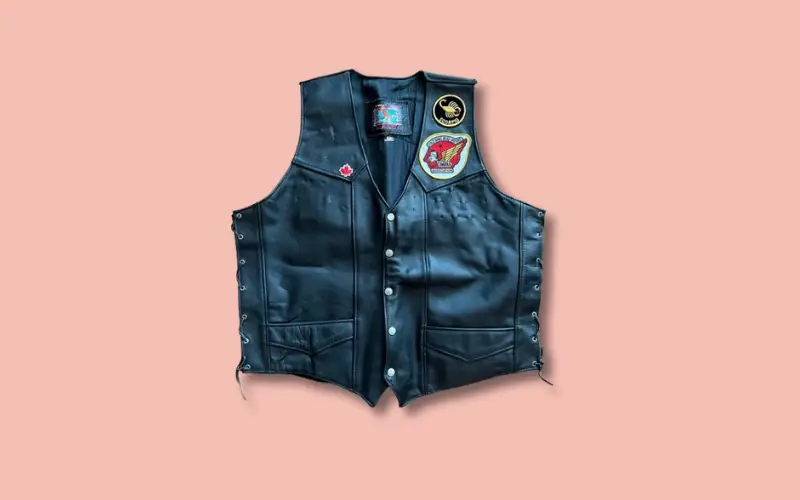
2.4 Bottom rocker placement
The lower rocker, located along the bottom back of the vest, often features a curved patch that follows the vest’s contour. This area is frequently used for lettering, such as a club slogan, adding a personalized touch to the vest. While no strict rules govern the lower rocker, it’s commonly used for memorial patches honoring deceased members.
Some bikers create a dedicated row for these patches along the bottom edge, adding to it as needed, while others choose to place memorial patches throughout the vest’s design. This area provides a space for remembrance and paying tribute within the biker community.
3. Choosing and applying your patches
3.1 Types of biker patches
A wide variety of biker patches exists, each serving a distinct purpose and carrying different levels of significance.
- MC (Motorcycle Club) patches, particularly “colors” patches, are highly symbolic and exclusive to club members.
- Rocker patches, often curved and placed above or below the center patch, typically denote the club’s name or location.
- Custom patches allow for personalized designs and expressions of individual interests.
- Military patches, signifying past service, should be worn with respect and accuracy, reflecting genuine military experience.
- Flag patches display national pride or affiliation with specific groups.
- Group patches represent membership in organizations or participation in events.
Patch materials range from embroidered and woven fabrics to leather and rubber labels, each offering a different aesthetic and level of durability. Choosing appropriate materials and respecting the significance of certain patch types, like MC and military patches, is crucial for navigating the complexities of biker patch etiquette and avoiding unintentional disrespect within the community.
The selection and placement of patches on a biker vest tell a story, and understanding the nuances of each patch type is essential for communicating that story accurately and respectfully.
3.2 Sewing vs. Iron-On patches
Attaching patches to a biker vest involves two primary methods: sewing and ironing.
Sewing, the traditional and most durable method, offers greater control and a permanent bond. It’s particularly well-suited for leather vests, where ironing can damage the material. Using a strong thread like nylon or polyester, along with a sturdy needle, ensures a secure attachment.
Ironing, using patches with heat-activated adhesive, provides a quicker, simpler alternative, especially for denim or fabric vests. However, ironing is not recommended for leather. Following the adhesive manufacturer’s instructions and using a protective cloth prevents damage to the vest fabric.
Choosing the right method depends on the vest material and the desired level of durability. For leather, sewing is generally preferred, while ironing can be suitable for denim or fabric vests with appropriate precautions. Using high-quality thread and adhesive ensures a secure and lasting bond, preserving the appearance of your patches and vest.
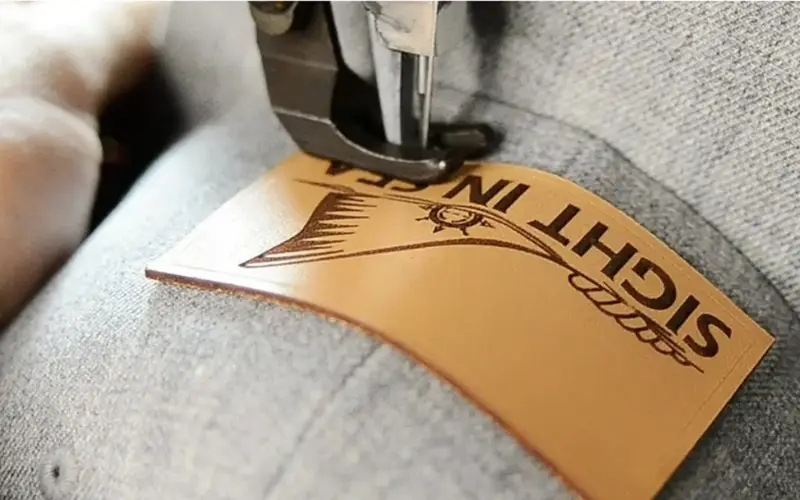
4. FAQs about biker vest patches
4.1 Can I wear a 1%er patch if I’m not a member?
Wearing a 1%er or any MC patch without belonging to the club is highly disrespectful and potentially dangerous, inviting conflict with legitimate members. These patches symbolize earned membership; wearing one falsely misrepresents your affiliation and disrespects the club’s traditions.
4.2 What’s the difference between a rocker and a colors patch?
Rocker patches, usually arched, identify a motorcycle club’s location (top rocker) and territory/chapter (bottom rocker), framing the center patch. The three-piece “colors” patch is the main club emblem, including the club’s name and logo, worn only by members.
4.3 Where can I buy custom patches for my vest?
Numerous options exist for purchasing custom patches for your biker vest. Online retailers offer a wide array of designs, customization options, and convenient ordering. Specialty stores catering to motorcycle enthusiasts often carry a selection of pre-made and custom patch options.
For high-quality custom patches, MyPackLove is a recommended source, offering expertise in design and production, ensuring your patches meet your specific needs and reflect your individual style or club affiliation. Whether you choose to shop online or in person, researching different vendors and comparing options allows you to find the best quality, pricing, and design services for your custom patch needs.
Investing in well-made, durable patches ensures your vest reflects your personality and affiliations with pride and style.
4.4 Can I put any patch I want on my vest?
While personal expression is valued, choosing patches for your vest requires respecting established biker culture and avoiding designs that could be misinterpreted or cause offense. Certain patches, especially those associated with motorcycle clubs or other organizations, carry specific meanings and should not be worn without legitimate affiliation.
Respecting these traditions and avoiding potentially offensive or disrespectful imagery ensures a positive and safe experience within the biker community.
4.5 How do I remove a patch I’ve sewn on?
Removing a sewn-on patch requires patience and careful technique. Using a seam ripper or small, sharp scissors, carefully snip the threads holding the patch to the vest, working from the back or inside of the vest whenever possible. Avoid pulling or tearing the patch, as this can damage the vest fabric.
Once all the threads are cut, gently peel the patch away. Any remaining threads can be carefully removed with tweezers. If adhesive residue remains, use a suitable adhesive remover, testing it on an inconspicuous area first. With patience and precision, you can successfully remove a sewn-on patch without damaging your vest.
5. MyPackLove – providing custom patches and more for your biker vest
MyPackLove.com offers high-quality custom patches and more to personalize your biker vest. We specialize in creating durable, custom-designed embroidered and woven patches, perfect for showcasing your club affiliation or individual style.
We also offer woven labels, zipper bags for storage, and other accessories to enhance your vest and gear. With years of experience and a commitment to quality craftsmanship, mypacklove.com is your trusted source for all your patch and personalization needs. Explore our website today or contact us for a custom quote and discover our special offers on biker patches.
Read More:
- Ship Poly Mailers with Stamps: USPS Rules, Costs and Tips
- USPS poly mailers: Sizes, regulations & where to buy
- How to print on poly mailers: Methods, costs and eco-friendly options
Creating a personalized biker vest is a journey of self-expression within a rich cultural context. Understanding patch placement rules, respecting established biker traditions, and choosing patches that authentically represent your affiliations and individuality are crucial. Your vest tells your story, and thoughtful patch placement allows you to communicate that story with pride and respect. Explore different design options, research various patch types, and create a vest that reflects your unique personality and journey within the biker community. For high-quality custom patches and personalized accessories, visit MyPackLove.com and begin crafting your perfect vest today.

